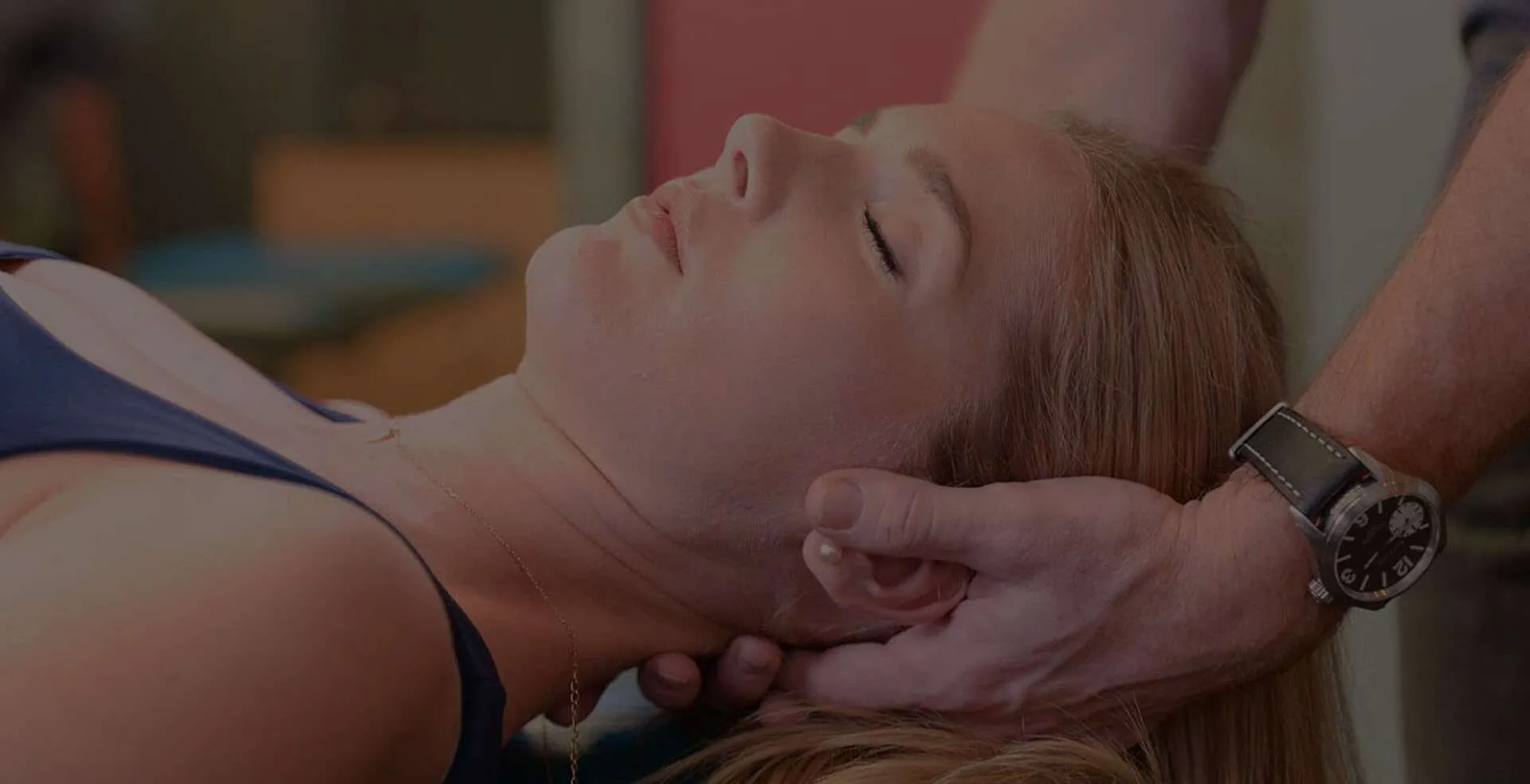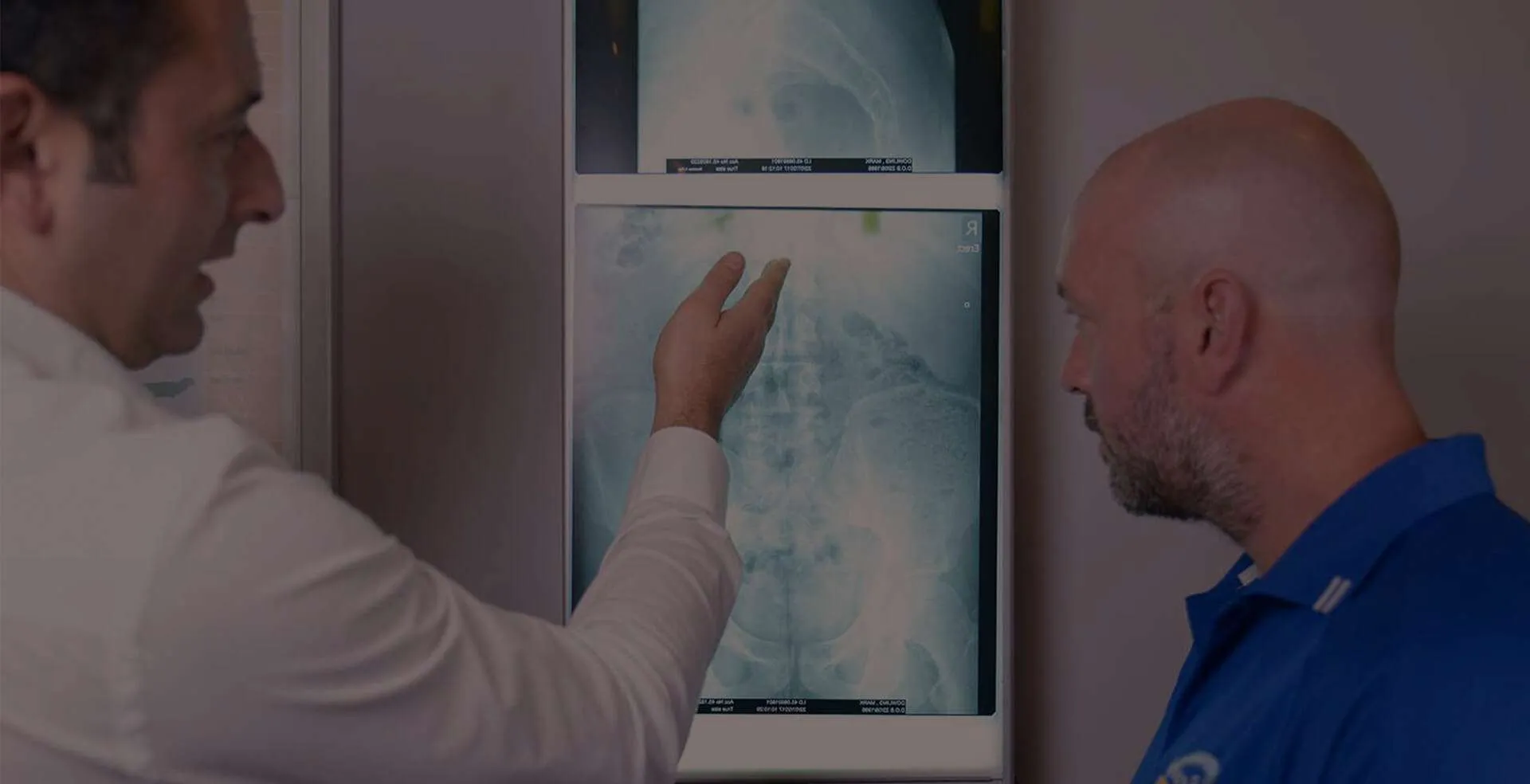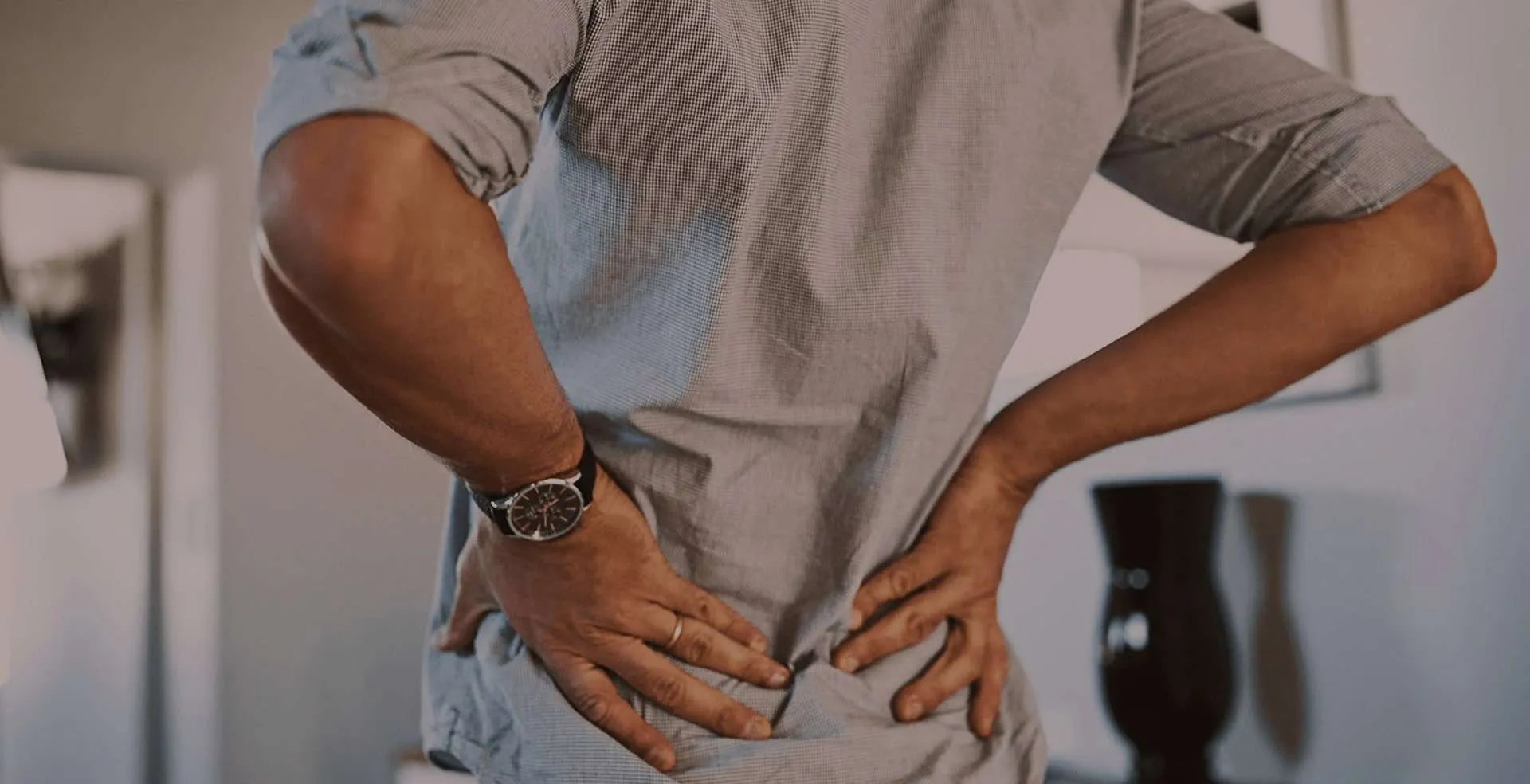Disc Treatment: Causes, Symptoms, and Effective Treatments
Disc pain can be a debilitating condition that affects millions of people worldwide, impacting their quality of life and daily activities. Whether caused by injury, age-related degeneration, or prolonged poor posture, disc issues often lead to persistent discomfort and limited mobility.
Fortunately, chiropractors offer effective disc treatment options that can provide significant relief without resorting to invasive procedures or heavy reliance on medication. By utilizing a combination of specialized techniques, including spinal adjustments, targeted exercises, and lifestyle recommendations, chiropractors can address the root causes of disc pain and help patients regain their comfort and functionality.

Solutions for Disc Pain
- Chiropractic Care
- Physical Therapy
- Advanced Interventions and Multidisciplinary Care
- Patient Education
- Lifestyle Modifications for Long-term Management
Understanding the Causes of Disc Problems
Spinal disc problems can arise from various factors, often related to the spine’s natural aging process or sudden injuries. As we age, our spinal discs gradually lose water content and flexibility, making them more susceptible to wear and tear. Poor posture, repetitive strain from improper lifting, and prolonged sitting can exacerbate this degeneration.
Herniated Discs and Lifestyle Influences
Sometimes, excessive pressure causes a disc to bulge or rupture, resulting in a herniated disc. Genetic predisposition can influence disc health, while lifestyle factors such as smoking, obesity, and certain occupations involving heavy lifting or constant vibration may accelerate disc damage. Traumatic events like car accidents or sports injuries can also cause immediate disc problems. When a disc becomes damaged or herniated, it may compress or irritate nearby nerves, leading to pain, numbness, or weakness in the back and potentially radiating to the limbs.
Medical Conditions and Disc Health
Some medical conditions, such as osteoarthritis, spinal stenosis, or autoimmune disorders, can indirectly affect disc health. In rare cases, infections or tumors near the spine can mimic the symptoms of disc problems. The cumulative effect of multiple minor injuries over time can lead to disc degeneration, even if no single event seems significant.
Additional Factors Impacting Disc Health
The complexity of spinal disc problems extends beyond these common causes. Nutritional deficiencies, particularly in vitamins D and C, can affect disc health and healing processes. Dehydration can also impact disc function, as discs rely on proper hydration to maintain their shock-absorbing properties. Stress and anxiety may contribute to disc pain by increasing muscle tension and altering posture.
Understanding these diverse causes is crucial for developing effective herniated disk treatment plans. Chiropractors and other healthcare professionals consider these factors when diagnosing disc issues and creating personalized treatment strategies to address both the symptoms and underlying causes of disc pain.
Recognizing Symptoms of Spinal Disc Problems
Spinal disc problems can manifest through a variety of symptoms, ranging from mild discomfort to severe, debilitating pain. Understanding these symptoms is crucial for both patients and healthcare providers, as it aids in accurate diagnosis and guides the development of effective therapy for herniated disc.
Localized or Radiating Pain
The most common symptom of spinal disc issues is localized pain in the affected area of the spine. This pain can vary in intensity and character, often described as sharp, dull, or burning. For many individuals, the discomfort worsens with certain movements or positions, such as bending, twisting, or lifting. Prolonged sitting or standing can exacerbate the pain, making it challenging for people to maintain comfort in their daily activities.
One of the hallmark symptoms of disc problems is radiating pain. When a disc herniates or bulges, it can compress or irritate nearby nerves, leading to pain that travels along the path of the affected nerve.
For instance, a herniated disc in the lower back might cause sciatica, where pain radiates from the lower back down through the buttocks, thighs, and potentially to the feet. Similarly, a cervical disc issue can result in pain that shoots down the arm and into the hand. This radiating pain is often accompanied by tingling or numbness, creating a sensation often described as “pins and needles.”
Muscle Weakness
Muscle weakness is another significant symptom associated with spinal disc problems. Depending on which nerves are affected, patients might experience difficulty in lifting objects, reduced grip strength, or even trouble walking. This weakness can be particularly concerning as it may increase the risk of falls or further injury. Additionally, muscle spasms near the site of the disc issue are common, as the body attempts to stabilize the affected area and prevent further damage.
Numbness and Tingling Sensations
Numbness and tingling sensations, known medically as paresthesias, frequently accompany disc pain. These sensations can occur in various parts of the body, depending on which nerves are impacted by the disc problem. For example, a lumbar disc issue might cause numbness in the legs or feet, while a cervical disc problem could lead to tingling in the arms or hands. In some cases, these sensations may come and go, while in others, they can be persistent and highly disruptive to daily life.
Changes in Reflexes
Changes in reflexes can also occur with spinal disc problems. Healthcare providers often test reflexes during physical examinations, as diminished or exaggerated reflexes can indicate nerve compression due to a disc issue. This symptom, while not always noticeable to the patient, can provide valuable diagnostic information for healthcare professionals.
Severe Cases and Medical Emergencies
In rare but serious cases, spinal disc pain can lead to changes in bladder or bowel function. This symptom, particularly when accompanied by numbness in the groin area, may indicate a condition called cauda equina syndrome, which is considered a medical emergency requiring immediate attention.
Asymptomatic Disc Abnormalities
It’s worth noting that not all spinal disc issues cause noticeable symptoms. Some individuals may have herniated or bulging discs that are visible on imaging studies but experience no pain or neurological symptoms. This phenomenon, known as asymptomatic disc abnormalities, underscores the complexity of disc-related problems and the importance of herniated disc treatments and similar therapies.
It’s important to note that the severity and duration of symptoms can vary greatly among individuals. Some people may experience sudden, acute pain that gradually improves over time, while others might have chronic, low-grade discomfort that persists for months or even years. Factors such as the size and location of the disc problem, individual pain tolerance, and overall health can all influence how symptoms present and progress.
Aggravating and Relieving Factors
Many individuals with spinal disc problems find that their symptoms worsen with certain activities or positions and improve with others. Common aggravating factors include prolonged sitting, bending forward, lifting heavy objects, or twisting the spine. On the other hand, some people find relief by lying down, particularly in positions that take pressure off the affected disc, such as lying on one’s back with knees elevated.
Impact on Daily Life
The impact of spinal disc problems on daily life can be significant. Many patients report difficulties with sleep, as finding a comfortable position can be challenging. Work performance may suffer, especially in jobs that require physical labor or prolonged sitting.
Recreational activities and exercise routines often need to be modified or temporarily suspended. These lifestyle changes can lead to secondary issues such as weight gain, muscle deconditioning, and even depression or anxiety.
Understanding the full spectrum of spinal disc pain symptoms is crucial for both patients and healthcare providers. It allows for more accurate diagnosis, helps in monitoring the progression of the condition, and guides the development of effective treatment plans
Comprehensive Disc Treatment Options
When it comes to addressing spinal disc problems, a comprehensive approach that combines lifestyle changes and professional care, such as chiropractic treatment, often yields the best results.
The goal of any treatment for a slipped disc is to alleviate pain, improve function, and prevent further damage to the affected disc and surrounding structures..
Role of Chiropractic Care
Chiropractic care plays a significant role in the treatment of slipped discs. Chiropractors use various techniques to help realign the spine, reduce pressure on the affected disc, and promote healing. These may include spinal adjustments, manual therapy, and specialized exercises. The goal is to improve spinal alignment, reduce inflammation, and enhance overall spinal function. Many patients find significant relief through regular chiropractic sessions, which can be tailored to their specific condition and pain level.
Physical Therapy
Physical therapy often complements chiropractic care in the treatment of spinal disc problems. Therapists can teach patients specific exercises to strengthen the muscles supporting the spine, improve flexibility, and enhance overall body mechanics. These exercises, when performed regularly, can significantly reduce pain and improve function over time.
Heat and Cold Therapy
For many patients, a combination of heat and cold therapy provides relief from disc pain. Applying ice packs can help reduce inflammation and numb pain, especially in the acute phase, while heat therapy can relax muscles and increase blood flow to the affected area, promoting healing. Chiropractors often advise on the appropriate use of these therapies as part of a comprehensive treatment plan.
Advanced Interventions and Multidisciplinary Care
While many patients find relief through conservative measures, some may require more advanced interventions. In such cases, chiropractors work in conjunction with other healthcare providers to ensure comprehensive care. This might include referrals for imaging studies, pain management specialists, or in severe cases, surgical consultation.
Patient Education
Education is a crucial component of any treatment for slipped discs. Chiropractors spend time educating patients about their condition, the mechanics of the spine, and how daily activities impact spinal health. This knowledge empowers patients to take an active role in their recovery and make informed decisions about their care.
Lifestyle Modifications for Long-term Management
In conjunction with chiropractic care, lifestyle modifications are crucial for long-term management of spinal disc problems. This often includes adopting proper posture and ergonomics, especially for those who spend long hours sitting at work.
Ergonomic chairs, standing desks, and regular breaks to move and stretch can make a substantial difference. Chiropractors can provide guidance on proper posture and demonstrate exercises that can be done at home or work to strengthen the core and back muscles, which provide crucial support to the spine.
Rest and Activity Modification
One of the first steps in managing spinal disc pain is often a period of relative rest. This doesn’t mean complete bed rest, which can actually lead to muscle weakness and stiffness, but rather a reduction in activities that exacerbate the pain. During this time, patients are typically advised to avoid movements that strain the spine, such as heavy lifting, twisting, or prolonged sitting. However, gentle movement and light activities are usually encouraged to maintain flexibility and prevent muscle atrophy.
Weight Management and Diet
Weight management is another important aspect of treatment for slipped discs. Excess weight puts additional stress on the spine, particularly the lower back. A balanced diet and regular exercise, under the guidance of healthcare professionals, can help patients achieve and maintain a healthy weight, reducing strain on the affected disc.
Stress Management Techniques
Stress management techniques are also valuable in the treatment of slipped discs. Stress can cause muscle tension, which can exacerbate disc pain. Practices such as meditation, deep breathing exercises, or yoga (modified as appropriate for the condition) can help reduce stress and promote relaxation. Some chiropractors incorporate these techniques into their treatment plans or can refer patients to appropriate resources.
Use of Supportive Devices
In some cases, treatment for slipped discs may include the use of supportive devices. Lumbar support belts or cervical collars can provide temporary relief by limiting movement and reducing pressure on the affected disc. However, these should be used under professional guidance to avoid dependency or muscle weakness from overuse.
Sleep Habits and Spinal Health
Lifestyle changes often extend to sleep habits. A supportive mattress and proper sleeping position can significantly impact spinal health. Chiropractors can advise on the best sleeping positions and may recommend specific pillows or mattress types to support the spine during rest.
It’s important to note that recovery from spinal disc problems is often a gradual process. Patience and consistency with treatment plans are key. Many patients find that a combination of regular chiropractic care, home exercises, and lifestyle modifications provides significant improvement over time.
Disc Treatments - Summary
Chiropractic adjustments, targeted exercises, and proper posture can help alleviate pressure on affected discs and strengthen supporting muscles. Additionally, maintaining a healthy weight, practicing good ergonomics, and managing stress are crucial for long-term spinal health.
While severe cases may require more advanced interventions, many individuals find significant improvement through non-invasive treatments and lifestyle changes. By working closely with healthcare professionals and committing to a comprehensive treatment plan, most people with spinal disc problems can effectively manage their condition and return to a more comfortable, active lifestyle.
Neck Pain

How to Know If Shoulder Pain Is Serious?
Shoulder pain is a common complaint that can stem from various causes, ranging from minor strains t...
Pregnancy Back Pain: Chiropractic Relief
Pregnancy is indeed something to be happy about—the joy of creating an entirely new human being who...
The Main Reasons for Lower Back Pain
You’ve probably experienced some form of lower back pain, regardless of your age. Some of it is act...
Here’s Why Chiropractic Care Is Effective for Back Pain
Back pain is a pervasive issue affecting millions worldwide, and most of us have probably experienc...
Back Pain

How to Know If Shoulder Pain Is Serious?
Shoulder pain is a common complaint that can stem from various causes, ranging from minor strains t...
Pregnancy Back Pain: Chiropractic Relief
Pregnancy is indeed something to be happy about—the joy of creating an entirely new human being who...
The Main Reasons for Lower Back Pain
You’ve probably experienced some form of lower back pain, regardless of your age. Some of it is act...
Here’s Why Chiropractic Care Is Effective for Back Pain
Back pain is a pervasive issue affecting millions worldwide, and most of us have probably experienc...
Disc Pain

How to Know If Shoulder Pain Is Serious?
Shoulder pain is a common complaint that can stem from various causes, ranging from minor strains t...
Pregnancy Back Pain: Chiropractic Relief
Pregnancy is indeed something to be happy about—the joy of creating an entirely new human being who...
The Main Reasons for Lower Back Pain
You’ve probably experienced some form of lower back pain, regardless of your age. Some of it is act...
Here’s Why Chiropractic Care Is Effective for Back Pain
Back pain is a pervasive issue affecting millions worldwide, and most of us have probably experienc...
Shoulder Pain

How to Know If Shoulder Pain Is Serious?
Shoulder pain is a common complaint that can stem from various causes, ranging from minor strains t...
Pregnancy Back Pain: Chiropractic Relief
Pregnancy is indeed something to be happy about—the joy of creating an entirely new human being who...
The Main Reasons for Lower Back Pain
You’ve probably experienced some form of lower back pain, regardless of your age. Some of it is act...
Here’s Why Chiropractic Care Is Effective for Back Pain
Back pain is a pervasive issue affecting millions worldwide, and most of us have probably experienc...
Spine Pain

How to Know If Shoulder Pain Is Serious?
Shoulder pain is a common complaint that can stem from various causes, ranging from minor strains t...
Pregnancy Back Pain: Chiropractic Relief
Pregnancy is indeed something to be happy about—the joy of creating an entirely new human being who...
The Main Reasons for Lower Back Pain
You’ve probably experienced some form of lower back pain, regardless of your age. Some of it is act...
Here’s Why Chiropractic Care Is Effective for Back Pain
Back pain is a pervasive issue affecting millions worldwide, and most of us have probably experienc...
